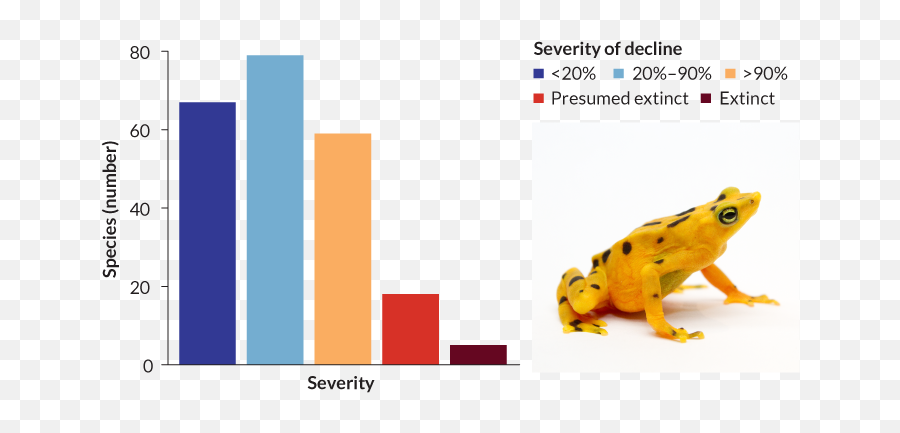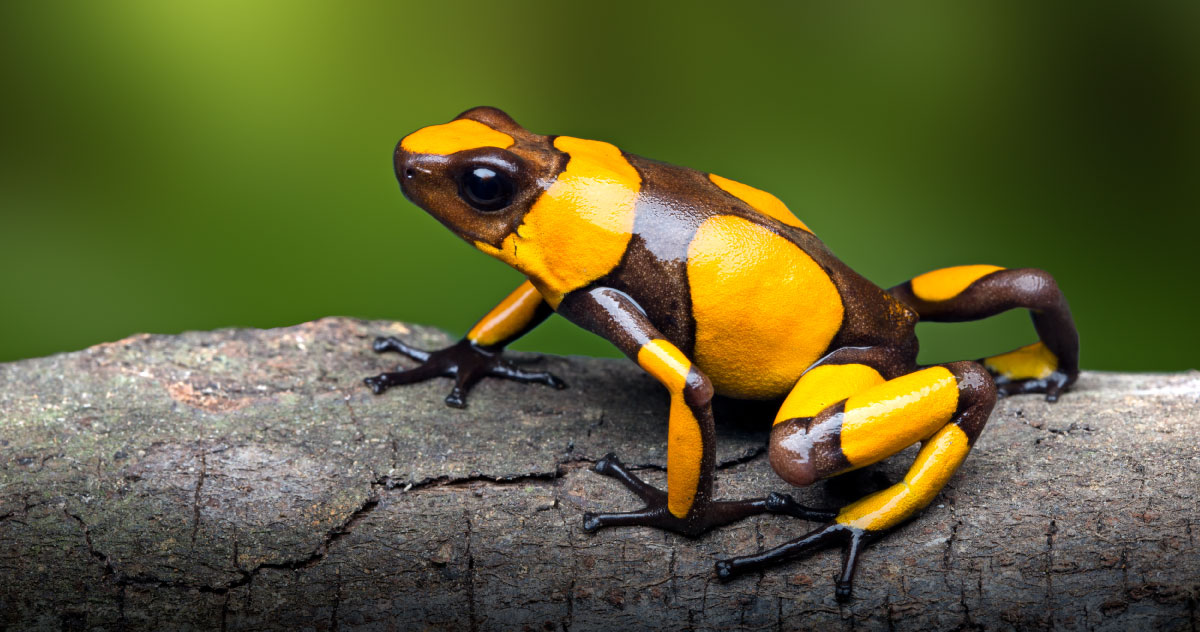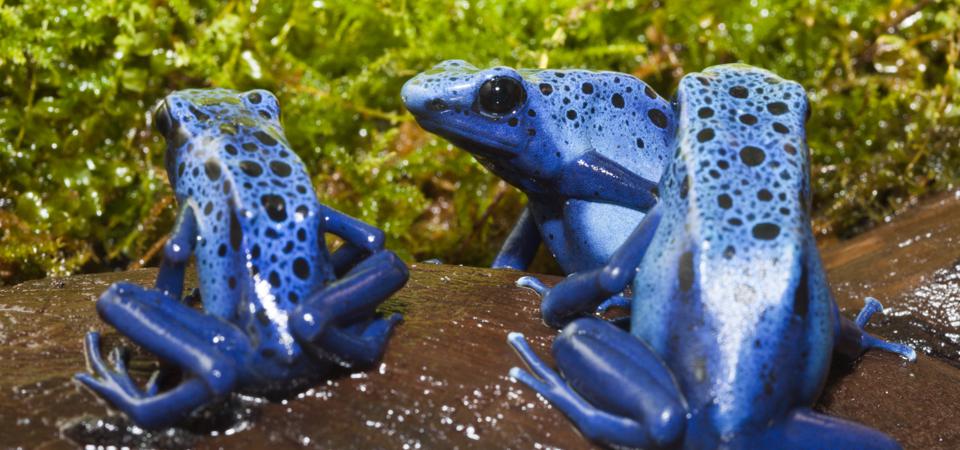STATUS
Critically Endangered


Many other frog species camouflage themselves in the wild, but the poison dart frog uses its brightly colored skin to warn predators that it is unfit to eat. The frog's skin secretes a dangerous poison that can paralyze and even kill predators. There are more than 100 species of poison dart frogs, including those that live in the Amazon.
Climate change and habitat loss threaten their survival. WWF is working to ensure that their Amazon forest habitat remains intact.
Poison dart frogs comprise two families of frog species, Dendrobatidae and Aromobatidae, native to rainforests of South and Central America. About a quarter of the more than 200 species are listed as threatened or critically endangered. Ranging from barely 1 inch to 2 1/2 inches in length, these day-active frogs display bright colors that help predators remember they are inedible. Although in the wild their poison is deadly, poison dart frogs born in captivity are not poisonous. Scientists believe the wild-born frogs acquire and store toxins from insects they eat, which collect the toxins from rainforest plants. Several man-made hazards impact these frogs.

STATUS
Critically Endangered

SCIENTIFIC NAME
Dendrobatidae

POPULATION
There are more than 100 species of poison dart frogs

LENGTH
0.4 to 2.4 inches

WEIGHT
0.02 to 0.14 ounces (0.5 to 4 grams),

HABITAT
RAINFORESTS

There are some species of poison dart frogs that can be used for medical purposes. This has lead researchers to work towards rebuilding the population of certain species. The poison from one species has the ability to be used as a painkiller.
Perhaps the primary threat to poison dart frogs is the logging and clearing of the rainforests where they live. Deforestation directly destroys their habitat, and leaves a hotter, drier terrain that provides no place or food for them. Clearing large swaths of rainforest while leaving islands of poison dart frog habitat can also isolate and trap populations in very restricted areas, leaving them greatly endangered.
Various chemicals commonly used in local farming retard the growth of poison dart frogs, and disrupt their reproductive cycles. Pesticides kill insects, leaving the frogs without a food supply, while fertilizers contaminate bodies of water.
These pollutants also are carried aloft in the atmosphere and distributed in mist and fog, contaminating regions far removed from the farming itself. Acid rain can kill larvae or inhibit their development, while pollutants in general weaken the frogs’ immune systems and make them more susceptible to infection and disease.
If the Poison Dart Frog becomes extinct, the spiders, ants, termites, and many other insects will become over populated. The leimadophis epinephelus will have less food and it's population will dwindle.




